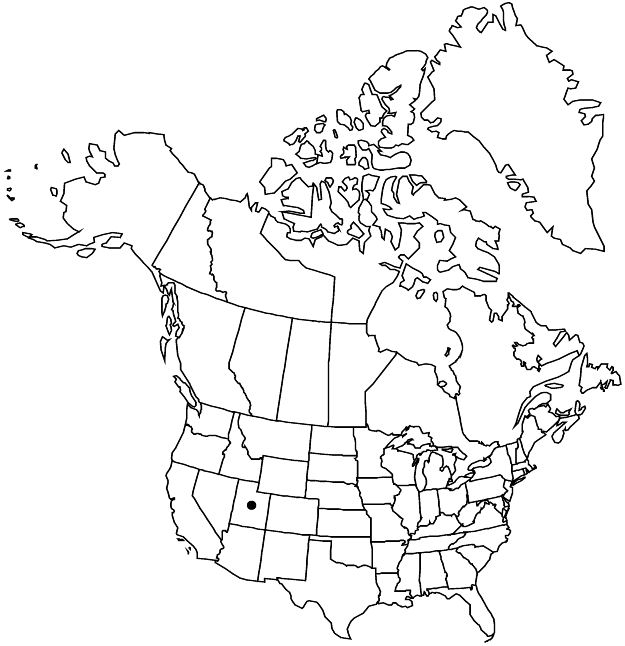Mentzelia shultziorum
Great Basin Naturalist 46: 361, figs. 1, 3, 4. 1986.
Plants perennial, bushlike, with subterranean caudices. Stems multiple, erect or decumbent, zigzag; branches along entire stem, distal longest, antrorse, straight to upcurved; hairy. Leaves: blade 13.6–33.3 × 7.2–18.5 mm, widest intersinus distance 6.2–14.8 mm; proximal elliptic, margins dentate, teeth 4–6, perpendicular to leaf axis, 0.5–0.6 × 1.2–1.5 mm; distal oblanceolate to elliptic, base usually not clasping, rarely clasping, margins dentate to serrate, teeth 4–8, slightly antrorse or perpendicular to leaf axis, 0.6–2.5 mm; abaxial surface with simple grappling-hook and complex grappling-hook trichomes, adaxial surface with simple grappling-hook and needlelike trichomes. Bracts: margins entire or slightly toothed. Flowers: petals golden yellow, 7.7–14.8 × 2.7–5.9 mm, apex acute, glabrous abaxially; stamens golden yellow, 5 outermost petaloid, filaments narrowly spatulate, strongly clawed, 6–11 × 1.9–5.2 mm, with anthers, second whorl with anthers; anthers straight after dehiscence, epidermis smooth; styles 5.4–9.7 mm. Capsules cup-shaped, 4.2–8 × 4.9–7.6 mm, base rounded, not longitudinally ridged. Seeds: coat anticlinal cell walls straight, papillae 4–6 per cell.
Phenology: Flowering Aug–Sep.
Habitat: Steep, barren slopes of white, green, and red clayey soils.
Elevation: 1200–1600 m.
Discussion
Mentzelia shultziorum occurs only on outcrops above Onion Creek and at the head of Castle Valley in Grand County.
Selected References
None.
